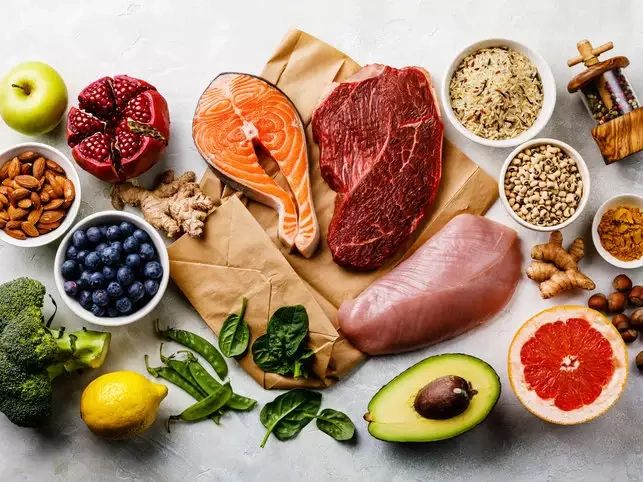Why Do I Hurt? What Happens to the Body After Injury?
It may seem like pain in the knee, shoulder, or back can just "pop up out of nowhere," but, in the absence of trauma, pain is most often the result of something that's been brewing for some time.

Lack of mobility can lead to altered movement patterns, swelling, muscle inhibition, and ultimately PAIN!
Overuse or repetitive microtrauma is an equations that factors in:
1) Volume
2) Frequency
3) Intensity
of an activity. There are key factors that influence your threshold to overuse, which, ironically, DECREASES the amount of force needed to create INCREASED pathology -- which is a nested loop conundrum, one that requires a multi-faceted approach that can be effective in addressing as many of the following impairments:
* Motor Control deficits
* Mobility deficits
* Imbalances
* Lack of movement variability
* Lack of progressive preparation
After injury, the body will manifest:
* Pain, Effusion (joint swelling), causing an INHIBITION of muscles firing
* Altered movement patterns to protect or compensate
* Altered proprioception (knowledge of where your body is in space)
* Prolonged muscle weakness
* Increased muscle tone (hypertonicity)
* Poor balance
Q: Why do I move poorly?!?
A: It's usually the result of either 2 reasons:
1) Not having the proper motor development
2) Adaptations over time
The body adapts to:
- Stress applied
- Stress NOT applied
- Chronic posture, movements, and activities
- Pain or injury
Graded exposure to stress and load (especially when overseen my a movement restoration specialist) develops stronger muscles and bones, whereby these adaptations are developed over time.
Decreased stress from disuse causes adaptations along with lack of movement and movement variability. This causes the body to rely on PASSIVE instead of DYNAMIC STABILIZERS, which yields to TIGHTNESS and DECREASED MOBILITY of intended dynamic stabilizing muscle groups.
The human body has an amazing capacity for:
- Adapting
- Compensating
Much like electricity or the flow of water, the body takes the path of LEAST resistance.
SAID is a training principle that explains that a certain exercise or type of training produces adaptations specific to the activity performed and only in the muscles (and energy systems) that are stressed by the activity. It stands for Specific Adaptation to Imposed Demands
The body gets "tight," "tired," or "weak" specific tp demands applied, adapting to activities, movement, training style, sport specificity, and posture. Chronic stress can lead to overuse of muscles and cumulative eccentric (lengthening muscle contraction) trauma.
- Static postural muscles tend to get TIGHT!
- Dynamic postural muscles tend to get WEAK!
Response to demands:
- Chronic hypertonicity and spasms of muscles may result in pain and ischemia (decreased blood flow)
- Prolonged tone and spasm may also lead to FATIGUE, which decreases the force available to meet postural and movement demands
- Neuromuscular response to prolonged sympathetic nervous system stimulation, which in turn INCREASES STRESS
Q: What is tightness?!?
A: The force in which a muscle resists being lengthened. Truly, this can be actual length, but more often is
NEUROMUSCULAR TONE
* Manual Therapy works by DESENSITIZING THE NERVOUS SYSTEM, "neuromodulating tone," as you may often here me say, and increasing Range of Motion (ROM) and mobility
Tightness leads to:
- Inhibition of antagonist muscles, creating muscle imbalances, which leads to:
- Poor movement patterns
- Compensation
- Fatigue
"Tightness" can be:
Length
Tone
Stiffness
Weakness can occur from:
- Disuse (actual strength loss)
- Atrophy (actual strength loss)
- Overuse
- Fatigue
- Compensation
- Inhibition
- Position (too long or too short to take advantage of length/tension relationship to optimize force generation)
From a more nervous system driving perspective, weakness can be from:
- Reciprocal inhibition--> muscles inhibited when antagonist is activated
- Arthrogenic inhibition--> from injury, pain, or swelling
To optimize motor control we need to harness BOTH roles of muscles:
- Move Joints
- Dynamically stabilize joints
"A weak muscle can't stabilize!"
If pain was due to an acute traumatic injury, our goals in PT and performance include:
- Protect structure(s)
- Facilitate healing
- Address acute secondary compensations
- address chronic imbalances and dysfunctional movement
- Maintain strength and conditioning
- Progressively build tissue capacity and return to activity
Hopefully, these concepts make sense and resonate with you on some levels.
If you're having pain, stiffness, muscle weakness, not quite moving right, or need to get back in YOUR game, then reach out, schedule a Complimentary Discovery Session, and let's Fast Track your recovery!













